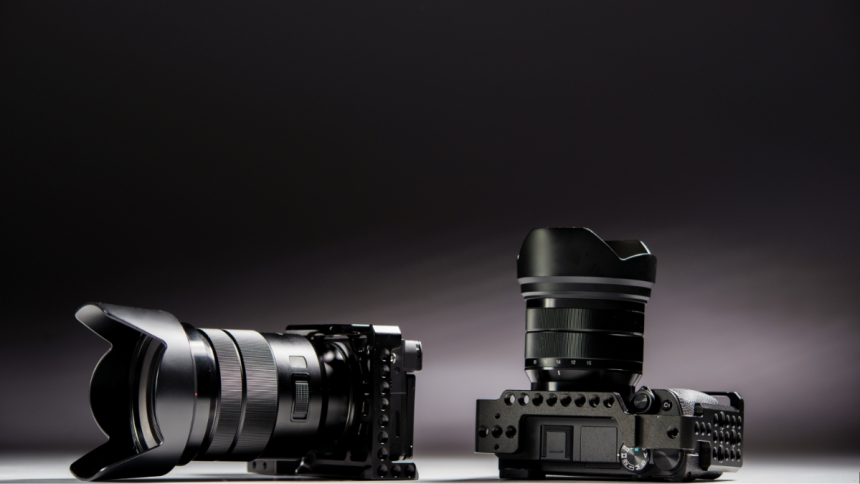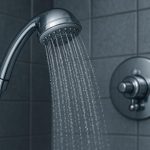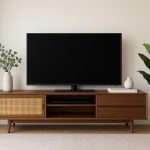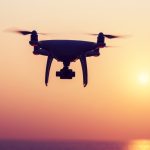In the world of photography, one of the most common debates is between DSLR cameras and mirrorless cameras. Both are powerful tools for capturing stunning images, but they come with different features, advantages, and drawbacks. If you’re new to photography—or even if you’re upgrading your gear—it’s important to understand what makes each camera type unique so you can make the right decision based on your needs.
Let’s break things down in a human and easy-to-understand way, whether you’re a beginner, an enthusiast, or even a professional.
What is a DSLR Camera?
DSLR stands for Digital Single-Lens Reflex. These cameras use a mirror mechanism that reflects light coming through the lens up into an optical viewfinder, so you’re seeing exactly what the lens sees. When you press the shutter button, the mirror flips up, and light hits the image sensor to take the photo.
DSLRs are built on older, time-tested technology that’s evolved from film cameras. Popular models include the Canon EOS 90D, Nikon D7500, and Canon Rebel series, which are well-loved by hobbyists and professionals alike.
What is a Mirrorless Camera?
Mirrorless cameras, as the name suggests, don’t have a mirror mechanism. Instead, light passes directly through the lens to the image sensor, which then sends a live preview to a digital screen or electronic viewfinder (EVF). This makes the camera lighter, smaller, and often faster in some areas.
Popular mirrorless models include the Sony Alpha series (like the A6400 or A7 IV), Canon EOS R series, Nikon Z series, and Fujifilm X-T series.
Size and Portability
Mirrorless cameras usually win in this department. Without the bulky mirror and optical viewfinder system, they’re more compact and lightweight. If you’re someone who travels a lot or prefers to carry a camera in your bag every day, a mirrorless model might be much more convenient.
DSLRs, on the other hand, are bulkier and heavier—but that’s not always a bad thing. Some people prefer the solid grip and build, especially for stability with longer lenses or in rugged conditions.
Image Quality
Here’s the truth: Both DSLR and mirrorless cameras can deliver stunning image quality. The image quality depends more on the sensor size and lens quality than on whether the camera has a mirror.
Both types offer full-frame and APS-C sensors. So if your focus is simply sharp, beautiful images, both systems can perform equally well.
Autofocus and Speed
This is where mirrorless cameras have taken a big leap forward in recent years. Originally, DSLRs had the edge with fast, accurate phase-detection autofocus. But now, many mirrorless cameras use advanced hybrid autofocus systems that combine phase detection and contrast detection, often with eye-tracking and face detection features that work incredibly well for both photos and video.
If you’re shooting fast-moving subjects—like sports, wildlife, or even kids running around—a modern mirrorless camera might give you an advantage with real-time autofocus tracking.
Viewfinder Experience
DSLRs use an optical viewfinder (OVF), so you see the real-world scene directly through the lens without any lag or pixelation. Some photographers prefer this natural, direct experience, especially in bright sunlight.
Mirrorless cameras use an electronic viewfinder (EVF) or just the LCD screen. While this was once seen as a downside, today’s EVFs are incredibly sharp and bright, and they show you a live preview of how your settings affect the shot—including exposure, white balance, and even depth of field. That’s a big plus for beginners.
Battery Life
DSLRs typically have better battery life. Because they don’t rely on a digital screen or EVF all the time, they can often shoot 800–1200 photos on a single charge.
Mirrorless cameras are improving, but many still average 300–600 shots per battery, depending on screen usage and features like Wi-Fi or video recording. If you’re doing long shoots or traveling, you might want to carry spare batteries with a mirrorless.
Lens and Accessory Options
This is where DSLRs still have a broader ecosystem—especially for Canon and Nikon. There’s a huge range of lenses, both new and used, along with accessories like flashes, battery grips, and more.
However, mirrorless cameras are quickly catching up. Sony, Canon, Fujifilm, and Nikon have been expanding their mirrorless lens lines aggressively. In fact, some of the newest and sharpest lenses are being made for mirrorless systems. Plus, you can often use adapters to mount DSLR lenses on mirrorless bodies, especially if you’re transitioning from DSLR gear.
Video Capabilities
Mirrorless cameras are now leading the charge in video. With features like 4K (or even 8K) resolution, in-body image stabilization (IBIS), and advanced autofocus during recording, they’ve become a favorite for content creators, vloggers, and videographers.
DSLRs can still shoot decent video, but the lack of cutting-edge features in most models makes them less ideal for modern video needs.
Price and Budget
You’ll find budget and premium options in both categories. DSLRs tend to be slightly cheaper for entry-level models, especially because older bodies and lenses are widely available secondhand.
Mirrorless models might cost more initially, especially if you’re going for a newer full-frame system, but you’re also getting more advanced features, especially for autofocus and video.
So… Which One Should You Get?
Go for a DSLR if:
- You want a longer battery life.
- You prefer an optical viewfinder.
- You have access to DSLR lenses or want to buy used gear.
- You’re okay with a slightly larger body.
Go for a mirrorless camera if:
- You want a smaller, lighter camera for travel or everyday use.
- You shoot a lot of video or fast-moving subjects.
- You prefer live preview and digital assistance for exposure settings.
- You want access to the latest autofocus and in-camera tech.
Final Thoughts
There’s no universal “best” camera—just the one that fits your style, goals, and budget. DSLR cameras offer reliability and strong battery performance, while mirrorless cameras bring innovation, speed, and compactness.
Lynn Martelli is an editor at Readability. She received her MFA in Creative Writing from Antioch University and has worked as an editor for over 10 years. Lynn has edited a wide variety of books, including fiction, non-fiction, memoirs, and more. In her free time, Lynn enjoys reading, writing, and spending time with her family and friends.















